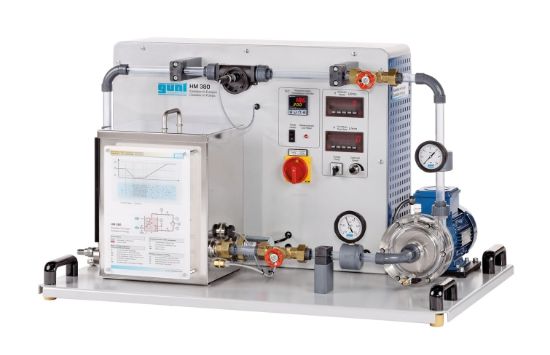The GUNT Cavitation Demonstration Unit allows visual and practical investigation of cavitation effects in centrifugal pumps. Cavitation, often caused by fast-moving impellers, can lead to severe mechanical damage. This unit is designed to clearly demonstrate how parameters such as intake pressure, temperature, and impeller speed influence cavitation.
Product Features
- Demonstrates cavitation effects in centrifugal pump impellers
- Transparent pump housing and inlet pipe allow clear visualisation of cavitation processes
- Enables high-quality image capture of vapour bubbles with short exposure photography (flash)
- Speed adjustable across a wide range via frequency converter to control flow velocity at impeller blades
- Inlet and outlet valves allow flow rate and pressure regulation
- Two manometers display inlet and outlet pressures in real-time
- Displays include water temperature in the tank, flow rate, and pump speed
- Heated tank with integrated temperature control
- Cooling via external water supply connection
- Demonstrates the effects of impeller geometry, intake pressure, and temperature on cavitation
Benefits
- Understand cavitation mechanics – Observe real-time cavitation effects and link them to system variables like pressure and temperature.
- Excellent visual clarity – Transparent components enable high-quality visual recording of vapor bubble formation and collapse.
- Flexible experimentation – Wide speed control range and adjustable flow parameters allow for varied test conditions.
- Complete instrumentation – Real-time display of critical metrics supports in-depth analysis and data collection.
- Educational value – Designed specifically for teaching and demonstration purposes in fluid mechanics labs.
Why Choose the GUNT Cavitation Unit?
The GUNT Cavitation Unit is a purpose-built teaching system for demonstrating cavitation in centrifugal pumps. With clear visualisation, precise control over experimental conditions, and reliable instrumentation, this unit delivers an engaging and informative learning experience. Ideal for fluid mechanics courses, it supports both qualitative and quantitative study of cavitation phenomena.

